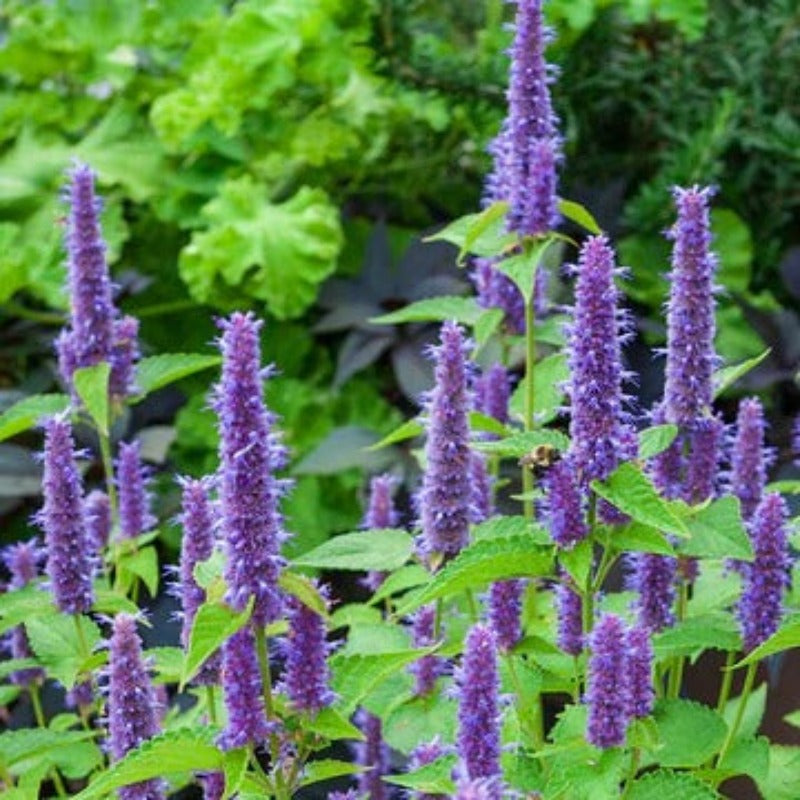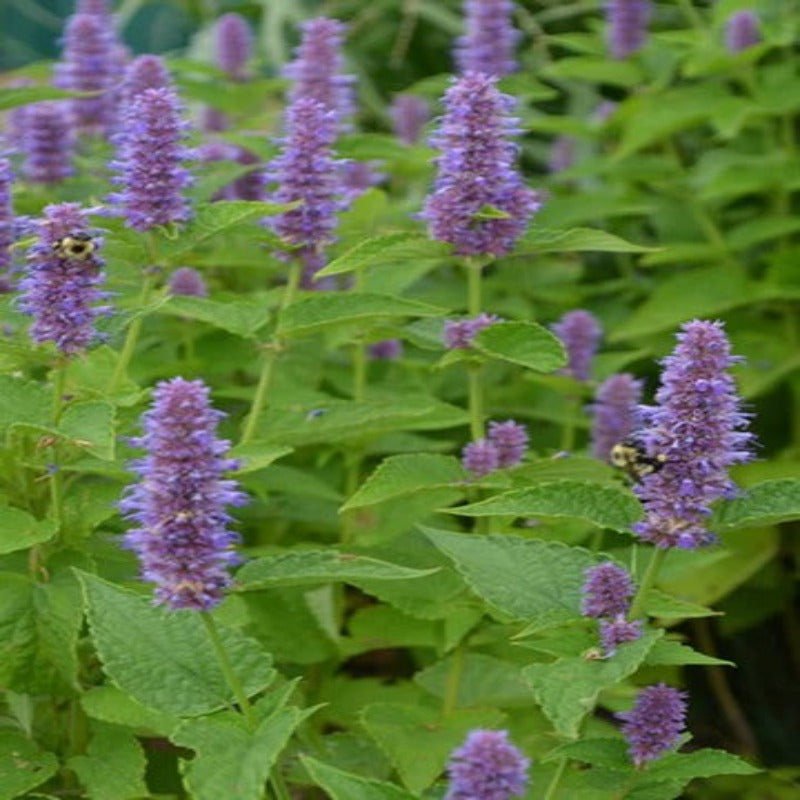- Historical context: Agastache foeniculum, commonly known as Anise Hyssop, is a perennial herb that has been used for centuries by Native American tribes for its medicinal and culinary properties.
- Geographical origination: This plant is native to North America, particularly the northern United States and Canada.
- Relevant cultural significance: Anise Hyssop has been valued by Native American tribes such as the Cheyenne and Chippewa for its healing properties and as a flavoring agent.
- Time period of discovery: The exact time of discovery is not well-documented, but it has been used for centuries by indigenous peoples.
- Original habitat: Agastache foeniculum typically grows in prairies, meadows, and open woodlands.
- Notable historical uses: Historically, it has been used to treat colds, coughs, and fevers, and as a tea for its soothing properties.
- Ideal temperature range: 60-70°F (15-21°C) is ideal for germination, but the plant can tolerate a wide range of temperatures once established.
- Soil type: Prefers well-drained, moderately fertile soil. It can tolerate poor soil conditions but thrives in rich, loamy soil.
- Sunlight requirements: Full sun to partial shade. It performs best with at least 6 hours of direct sunlight per day.
- Watering needs: Moderate watering is required. The soil should be kept moist but not waterlogged.
- Planting season: Best planted in the spring after the last frost, but can also be sown in late summer for a fall harvest.
- Germination time: Typically takes 10-14 days to germinate under optimal conditions.
- Growth cycle duration: It is a perennial plant, meaning it will grow back each year. It usually reaches maturity in its second year.
- Common pests and diseases: Generally pest-resistant, but can occasionally be affected by aphids, spider mites, and powdery mildew.
- Companion planting advice: Grows well with other herbs like mint, basil, and oregano. It also attracts beneficial insects like bees and butterflies.
- Common challenges and solutions: Overwatering can lead to root rot. Ensure proper drainage and avoid waterlogged soil. Powdery mildew can be managed by ensuring good air circulation and avoiding overhead watering.
- Nutritional values: Rich in vitamins A and C, and contains essential oils that have antimicrobial properties.
- Health benefits: Known for its anti-inflammatory, antiviral, and digestive benefits. It is often used to soothe sore throats and coughs.
- Culinary uses: Leaves and flowers can be used to flavor teas, salads, and desserts. The leaves have a sweet, licorice-like flavor.
- Medicinal uses: Traditionally used to treat respiratory issues, digestive problems, and to reduce fever. It is also used in aromatherapy for its calming effects.
- Other unique advantages: Attracts pollinators like bees and butterflies, making it a great addition to any garden for promoting biodiversity.








